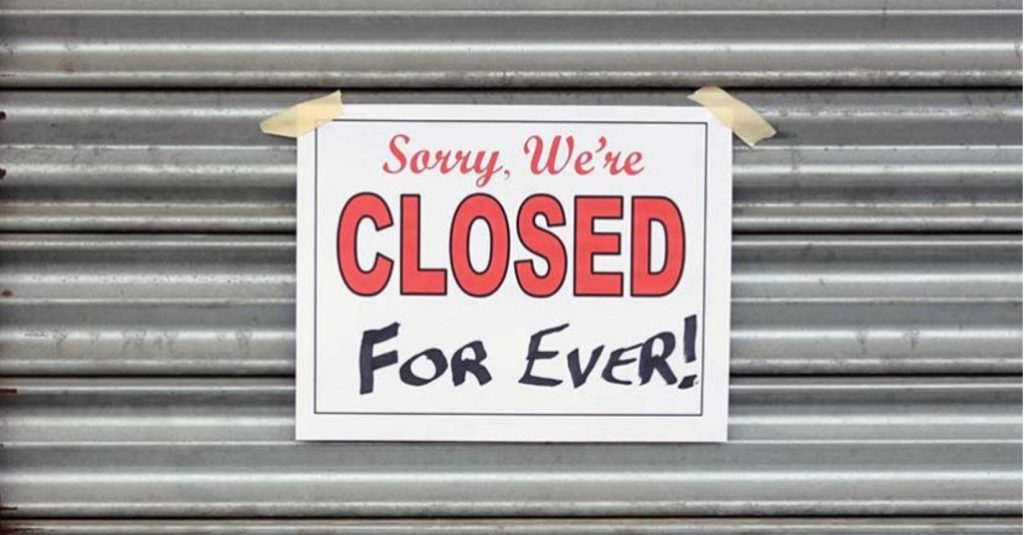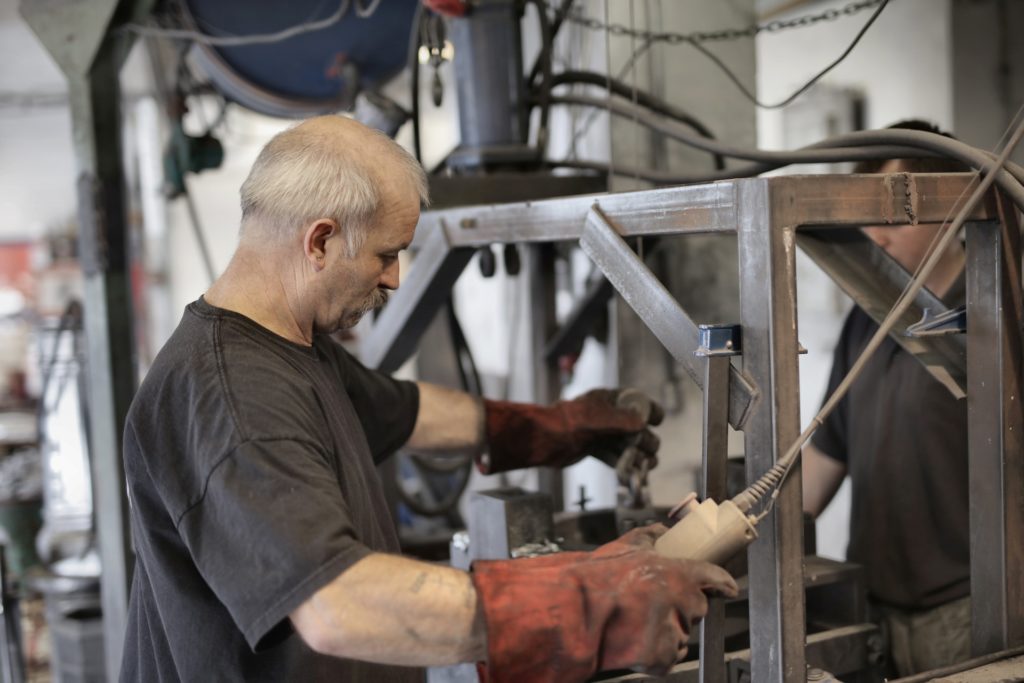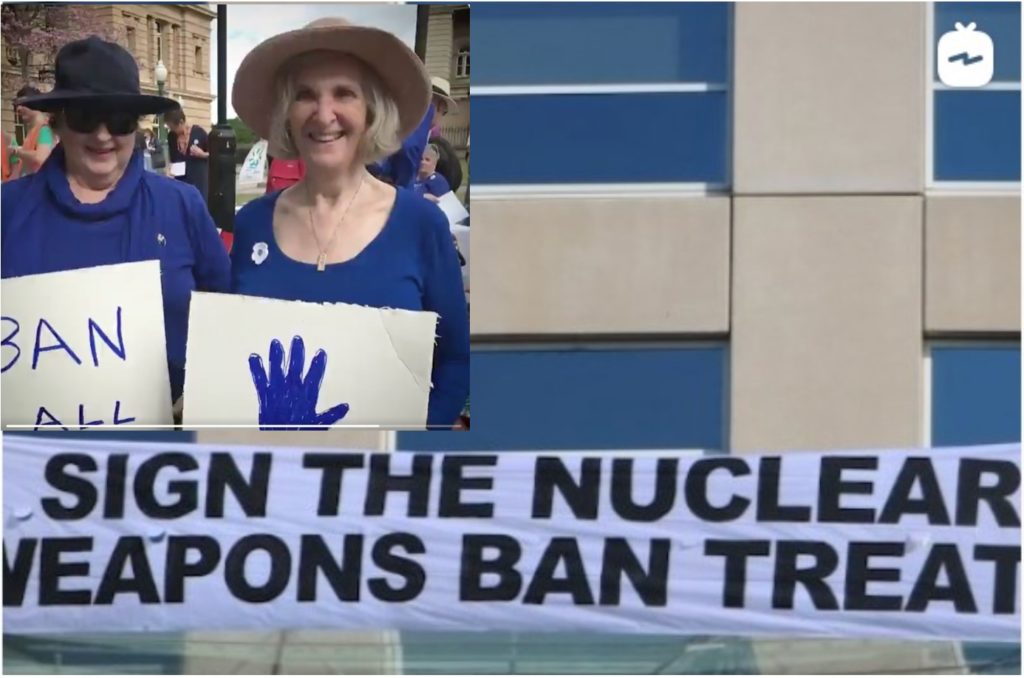
Our latest project! The Story of Asset Management
I hope you have been enjoying Ruth’s platypus posts on our blog as much as I have – and reflecting on the interesting and critical question she has been exploring, namely, what does it mean to be an asset manager?
This is not a simple question to answer. Which is why it needs thinking about. I have been doing much thinking about it over the past few months as I have worked on the first volume of Talking Infrastructure’s 4 volume narrative, ‘The Story of Asset Management’.
Each of the four volumes covers one decade, starting in 1984, to be finished by the end of 2023. Each volume has its own theme:
- Asset Management as a Quest. 1984-1993
- Asset Management as an Opportunity. 1994-2003
- Asset Management as a Discipline. 2004-2013
- Asset Management as a Business (and beyond?) 2014-2023
Team work
As Ruth has shown in her recent posts, Asset Management needs a team.
Our story of asset management is the story of how those teams developed, how they came together over key ideas, how they fought with each other and supported each other – and became the very special kind of multi-disciplinary, multi-national tribe we are all part of today.
You are wanted!
If you would like to be part of the story we tell, become a member of Talking Infrastructure today and we will let you know more.

Every infrastructure project causes damage – to society, to the environment. We know this. A new road means loss of green space. It disrupts existing commerce and communities. Steel and cement are toxic to the environment. We accept this damage as a necessary cost of achieving a larger community good.
For too long, we have accepted this ‘larger community good’ to be the short term jobs that are created. But as shown in the last two posts, not only is this jobs gain illusory, it causes its own damaging distortions in the economy. Construction workers might gain, but other workers lose.
So if we are to support a new infrastructure project it must be because of the greater, ongoing benefits that the infrastructure will provide – after it has been constructed. For evidence based decision making, this is where we must seek our evidence.
How do we do this? What sort of evidence should we seek?

When a government runs a ‘balanced budget’ its spending (and the jobs that this spending creates) is compensated for by its taxing (and the jobs that this taxing destroys). It follows that the justification for infrastructure can never be the jobs it creates for it doesn’t create any – it simply shifts jobs from one part of the economy to another.
The job losses are not easily measured but they are real. As asset managers we see it all the time, when, following an infrastructure spending splurge, governments try to claw back the money spent by reducing funds for operations and maintenance. So that not only is there not only no net increase in funding and jobs but we are now left with distortions in the economy – more assets to maintain but smaller budgets with which to do it.
We can see this level of distortion when it happens in our own organisations. But impacts extend beyond those organisations that benefit from the infrastructure spending, to those many companies, associations, individuals that now experience higher taxes or lower government spending in their areas or lower demand because spending has been shifted elsewhere. This is difficult to see and where logic must apply.
How can we be sure that spending money on a new infrastructure project trumps spending the same amount of money on hospital staff or teachers, out-of-work youth, or any one of a number of other spending opportunities?
For the distortions to be worth it to the community, we must be pretty sure of the ongoing value of the infrastructure to the community – see Jeff Roorda’s comments to the previous post.
And share your own suggestions

How often do you see arguments such as that spending, say, $100m will create Y,000 jobs? Rarely do we even question the logic, let alone the arithmetic. But we should do both. For if inserting $100m into the economy creates jobs – and it does! – then it must be equally true that extracting $100m reduces jobs. It follows that if the Government is running a balanced budget, then money into the economy through government expenditure is equal to money taken out of the economy through taxes to finance this and there is no net increase in jobs. The situation is worse if the Government is aiming at a budget surplus, for then more jobs are lost than are created.
The jobs created are nicely gathered together and visible for the project at hand, they are even amplified by media exposure, but what you don’t see are the jobs that are lost, for these are spread across the economy.
Let’s face it, to keep its budget under control it will either have to cut back on other expenditure or raise taxes and charges. (Think back to the last ‘stimulus’ bill, is that not what happened a year or so later? The government encouraged construction then later reduced funding affecting maintenance amongst other things.)
And as to the secondary round of expenditure – by which those receiving the first tranche of largesse are expected to go out and spend, thus creating more jobs, what about the secondary effects of the jobs that are lost?
Yes, we want to believe that we are making the world better by building infrastructure and creating jobs but are we in danger of letting wish fulfilment overcome logic?
Moreover, when we are losing jobs all over the country in order to put up a new infrastructure project, how can we be sure that we are gaining, in real community benefit terms, more than we are losing? Maybe we are not?

Sorry for long absence, I’m not dead, just been otherwise engaged. I am currently writing ‘The story of Asset Management: the first ten years’ (1984 – 1993) and as I read back through my old journals, it is easy to see why asset management has captivated me for so long and I thought some of the stories might captivate you, too. For example, try this:
1988 Scene: NSW Parliament House
In 1988 I attended a very heated debate on accrual accounting presented at the NSW Parliament House for elected members and selected others. It was memorable for a fight that almost broke out in the house. After much discussion on the pros and cons, one section of the audience was showing considerable disquiet. Eventually one of the group, a politician, stood up and angrily and loudly stated “If you reveal accrued liabilities we will be forced to do something about them”.
At this, the accounting professor on the platform, Bob Walker, replied neutrally “Accrual Accounting is simply an accounting system, it provides information, what you do with the information is up to you”. This was too much for the highly agitated politician who shouted “You’re just like Pontius Pilate, washing your hands of the whole affair”. Cheers broke out from that section of the audience.
What can we learn from this?
Now the academic was correct, if naive. It is true that accounting systems provide information that enable but do not enforce action. However awareness of information can be a propelling force to action, which the politician instinctively recognised. It is the old ‘ignorance is bliss’ argument, if no-one knows something needs to be done, then you cannot be blamed for not doing it. Once the facts are in the public domain, though, they may be far more difficult to ignore.
The information we develop as asset managers also presents imperatives to action – after all that is why we research, analyse and develop it. So we must be prepared for, and learn how to deal with, reactions like that of our angry politician and not go into the fray unaware. Yet how many times do we do precisely that?
The way in which our data or facts are presented is important, too. There may be no difference – in point of fact – between the glass that is half empty and the one that is half-full but the connotations are widely different. The truth is that facts can never ‘speak for themselves’. The language they speak and the message they give depends crucially on the way they are organised and presented. And this organisation and presentation is what politics is all about – influencing reactions. This is as true of internal, departmental politics as it is of larger scale national and international events.
We have developed a poor habit: decrying something as ‘just politics’ as if by doing so we can ignore it. But everything is politics! Better to learn how to play the game. That is, the game of presenting our information in such a way that the reaction we get is the one that we want.
It doesn’t happen by accident.

Popularity can be the death of a good idea.
Make a term, or an idea, popular and any number of people will latch onto it and attach it to their own agenda – and it doesn’t matter if their agenda is diametrically opposed to yours. In fact, it might serve them better if it is.
For example, I have seen instances of the term ‘asset management’ taken over by developers, applied to office cleaning, and, of course, to maintenance itself. The one I really objected to was the developers. Figuring that their own term had come into disrepute this particular group had decided to take ours!
We see what we want to see
Another problem with communication of ideas is that we tend to see what we want to see.
Years ago the Public Accounts Committee produced a report showing how much would need to be spent on hospital infrastructure renewal IF nothing was done by way of better maintenance, accounting and planning practices (ie without better asset management). A few days later the Minister for Health, completely ignoring the intent of the ‘if’ statement (as people are sadly inclined to do) profusely thanked the PAC Chairman since this ‘proved’ he needed a larger budget!
On another occasion, I was walking in the city when the State Treasurer dashed across a busy main road to tell me enthusiastically that it was thanks to me that the State had kept its triple A credit rating! What?! I had looked at our asset base and saw a future renewal problem that threatened to dwarf the state’s budget, however the credit agencies had looked at the dollar value of our assets – which we had made visible for the first time – and, ignoring the budgetary impact of restoring the deterioration that had already occurred and would need to be attended to, saw only billions of dollars in assets. We are all subject to this restricted vision. We see what we want to see.
All of this is by way of saying that the term I used almost 30 years ago for accounting for infrastructure has long since been hijacked, and by so many, that it is unwise to continue using it. So, I want to start again with greater neutrality.
The Goal
First: let us be clear about the task – namely to develop financial metrics that drive good infrastructure management and meet the need for financial responsibility and accountability. This requires genuine dialogue between two disciplines – and a listening ear.
Let’s start with a thought experiment
There may be lots of things you like about the current way in which we account for infrastructure, but what don’t you like? Are there problems that it creates for you or your organisation?
What’s your story?

Any maintenance or asset manager knows that the longevity of assets is critically dependent on how well they are maintained. And you don’t have to be a maintenance manager to know that your car needs regular servicing. It is kind of obvious! Yet, when it comes to the important public infrastructure on which we all depend, maintenance is considered dispensable and is the first to be cut in times of financial stringency.
It is all to do with how we account for infrastructure assets. Below is the problem – and how we can overcome it using your asset management plan and condition based depreciation (CBD).
The Problem
It pays to know a little history. When government departments and agencies adopted accrual accounting practices and had to bring infrastructure assets to account for the first time, (In Australia, from 1989) naturally they turned to the private sector, where this had been the practice for many years. And this is where the first problem arose since private sector assets such as plant and machinery are depreciated over their predetermined lifespan until they reach zero or some predetermned salvage value and then they are completely replaced.
Infrastructure assets are different. This does not happen with infrastructure assets which can be kept in service for an indefinite time by piecemeal, if somewhat lumpy, component renewal. What is the age of an asset which may have some components 100 years old and others that were renewed yesterday? What is the life of an asset that can be kept in service as long as you want it to? These are unanswerable questions. They go to the heart of the difference between infrastructure and non-infrastructure assets and require a different accounting approach.
However when infrastructure assets were first brought to account, there was no alternative accounting approach for infrastructure assets, so rather than account for the entire infrastructure system, it was decided to assign each component a definite life and depreciate it as if it were an independent asset. It seemed a practical solution to a difficult problem. But in the process it completely ignored the key characteristic of infrastructure assets which is the interdependence of the components, where the life of a component, and thus the need to renew, is dependent on the other components with which it interacts. In other words, the life of components is indefinite, as is the life of the system as a whole. This does not mean infinite! It just means that you cannot define a life of a component until it reaches the stage of renewal. So depreciation in this case doesn’t work.
You will also notice something else about this approach. The economic life of any asset, as we stated at the beginning, depends on how well it is maintained, and yet maintenance does not feature in this accounting process. This is what makes it so easy for organisations to cut maintenance, since cutting maintenance does not affect the life of the asset, at least not in the accounting system – only in the real world!
The Solution
We need a better system, one that takes equal account of maintenance (minor and major) and renewal, i.e.everything that we need to spend to maintain the functionality of the asset. (In practice ‘maintenance’ and ‘renewal’ are really just different points on a continuum.)
Why do we depreciate assets at all? It is so that we can represent reduction in asset value in any particular period (asset value = its store of future services)
Is there a better way of doing this that recognises the distinct character of infrastructure assets? There is! What better way can there be of valuing the using up of asset services than the cost of making it good again? This is what is called Condition Based Depreciation (CBD). And it is available to any organisation that has a sound, and audited, AM plan as a costless spinoff. Put simply, the condition assessment of your assets that tells you what you need to spend over the planning period to maintain service function and that is in your AM Plan. It covers maintenance, minor and major and renewal and is the cost of making good the consumption of the asset over that period. You choose your planning period and it is updated on a rolling annual basis. The cost of ‘making good’ over the planning period is then expressed as an annuity to give you an annual cost and is the best estimate of real depreciation.
Second history lesson: When the UK water industry was being privatised in the early 1980s the argument was put forward that their assets should not be depreciated because the assets were continously maintained. This was rightly rejected by the accounting profession who said, in effect, ‘prove it’ and that is what a sound, audited AM plan does. Unfortunately some do not recognise the distinction between this and the AM plan backed CBD.
CBD was introduced in 1993 and has been well received by maintenance and asset managers and by practising accountants. It was adopted by the NSW Roads authority and by about a half of NZ’s councils for about ten years (until their accounting society called a halt). It is even provided as the ‘modified’ approach in GASB 34, the standard that introduced accrual accounting into the USA in 1999 but it was rejected by the Accounting Standards Board in 2004 and nothing much happened for the next 13-14 years!
Now it is back into contention because of problems with asset valuation giving depreciation figures that are artificially high and causing councils to be deemed non-viable. These councils are now scrambling to make cuts to their budget, eliminating services and sacking staff – and all at a time of Covid 19! So fictional figures are giving rise to real – and negative – physical effects. We can do better, much better!
Would CBD help bring your maintenance to the fore?
Extra references on CBD
Condition based depreciation for infrastructure assets, 1993
Depreciation of infrastructure assets
Condition based depreciation – the questions
- Extra information is provided here.
- Ask any questions you like and I will answer all of them.
To ask questions and to find out more about a national forum to develop support for adoption of CBD, use the comments section below. (There is global interest in this subject, so we might extend it to a global forum.)

In the last post I suggested that it might be time we changed our thinking on major issues like nuclear disarmament. But perhaps it is also time we changed our ideas on how we try to convince anyone to change anything!
I am indebted to Kerry McGovern for the following idea. She spoke of a friend who had argued that when introducing a new and controversial idea, 3% of the population are already of this opinion and do not need you to tell them, 7% are almost there and can be easily convinced, and about 30% recognise that they don’t know enough but are prepared to find out, the next 30% are too busy doing other things, and the last 30% are going to oppose you no matter what. Her advice is forget that bottom 60% and concentrate first on networking with the 3%, bringing in the 7% and then, as a group addressing the next 30%. I don’t know the source of the figures but the general idea is attractive. Moreover, working on these figures, once we have captured the 37%, assuming that the middle ‘busy’ 30% are neutral, we now have a majority on our side!
So often, we focus on the bottom 60% and see the issue as an ‘us and them’ antagonistic confrontation. But what if we were to look instead at the top 40% and see the issue as one of collaboration? Would not that be generally happier and more productive?

Last year I took part in a ‘Ban the Bomb’ march. Many organisations were involved, including WILPF (The Women’s International League for Peace and Freedom), and the photo above is thanks to the keen eye of WILPF’s International Treasurer, Kerry McGovern, who noticed it in an Instagram feed of hundreds of photos to celebrate the fact that the UN had reached the milestone of the 50th ratification of the UN Global Nuclear Weapons Ban Treaty.
Here’s the situation
With the Honduras, 50 countries have now ratified the UN Global Nuclear Weapons Ban Treaty and there was much celebration. There are 84 signatories, so 34 are still to ratify. None of the 84 have nuclear weapons. Meanwhile countries that do, like the USA, Russia, the UK, France and China, India, Pakistan and North Korea (and likely Israel) have not signed. Australia also has not signed. It does not have nuclear weapons but it does possess the uranium which makes them possible. So effectively those that have signed, even if they haven’t yet ratified, are those who have everything to gain and nothing to lose.
We are now just a few months away from the end of the ten year agreement between the USA and Russia to limit nuclear research and testing.
No wonder the world is getting nervous!
But is treating nuclear disarmament as a moral issue the most effective way forward?
It certainly is a moral issue, and ‘Ban the Bomb’ marches such as the one that I took part in last year, keep the issue in the public mind, but is this the most effective way to bring about change?
When we look at the issue clear eyed we can see that it is those who have nuclear weapons who are the most at risk, both physically and morally. They are the ones who have the difficult decisions to make, not the 84 signatories from the non-nuclear countries. And after the experience of Ukraine, a country that did have nuclear weapons but ceded them to Russia in the breakup of the USSR and then suffered the consequences, it is not surprising that those who currently possess nuclear arms are in no hurry to dispossess themselves.
So is it not time to invert our thinking?
Instead of collecting masses of signatories from non-nuclear nations, which only serves to make us feel we are doing something, when we really aren’t, perhaps we would be more effective if world organisations thought about how they could make things safer for nuclear weapons countries to dispossess, particularly for Russia and the USA.
I realise that thinking of nuclear armed nations as needing protection, rather than us being protected from them, is not the normal way of looking at the problem. But this ‘inverted’ thinking might serve us well in all of our encounters with others. It puts us all on the same side, rather than in ‘us v. them’ opposition. This idea can be used everywhere.
LATE BREAKING NEWS (FRIDAY 30 OCTOBER)
The Russian Mission in Vienna has just issued a 4 tweet communiqué which you can find at https://twitter.com/mission_rf/status/1321815042384449538?s=09 . Its complaint is valid and the results are just what you would expect when you set up an antagonistic, ‘Us v. Them’ framework. See what you think!
The 4 tweets read
- On January 22, 2021 Treaty on the Prohibition of Nuclear Weapons will enter into force. It was negotiated without Russia or other nuclear-weapon states. (We regret) this development for the following reasons:
- We don’t see any legal gaps in disarmament process for #TPNW to fill in. It was negotiated w/out taking into account fundamental principles of #NPT. Those principles should be applied consecutively and w/out distortion
- #Disarmament should be addressed only through consensus of all parties, including nuclear-weapon-states as per #NPT. #TPNW conceptual framework is unacceptable. It ignored strategic context & addressed #disarmament separately from existing international security environment.
- (We stand) for stands for nuclear weapons-free world & respects those sharing this view. But this process can’t be forced. We reaffirm our individual & collective #NPT commitments, but #TPNW is a mistake. It creates a rift btw states & harms #NPT. We won’t support, sign or ratify it.

Goodbye
Infrastructure
Guy!
In the 1960s you were young and growing rapidly. We supported you as we do all youngsters. It was the right thing to do. But now you are grown and need to take your place in the support and protection of others. We have already passed the point where we should have weaned you and helped you grow to full independence. That is our fault. We weren’t seeing the bigger picture. But if we continue to baby you, to protect you, to put your needs ahead of others, we will end with a flabby, overgrown infrastructure, absorbed in itself, incapable of recognising its true purpose – which is to support the wellbeing of the community.
This possibility is being brought into clearer view by Covid 19. The global pandemic is having a negative impact on infrastructure demand which, while we may expect some recovery, won’t recover completely. It follows that increasing the supply whilst demand is falling will not produce the economic recovery effects we seek. We need to think again.
So, Infrastructure, the time has come for you to take your rightful place in the world, to underpin the four community wellbeings – social, cultural, environmental and economic. It is time to consider how best you can serve these wellbeings. You need to be clear about your purpose. Simply ‘being’ is self indulgent and will no longer cut it. Like all adults today you need to change and develop, learn new skills, and to do things not done before. Growing bigger is no longer the objective, it is now time to grow wiser, to demand less and provide more. For this you need a new image.
In your youth, you were brash and grey and analog – all concrete and steel. But now we say goodbye to this old image. In your maturity, you need to be self effacing, indispensable, but in the background and not the foreground. In this world, you are no longer grey, but white – the invisible whiteness of digital technology, of human intelligence, of caring, and yes, of love. No longer the focus of attention, it is now your role to help others grow and shine.

You are now the pot, the support, the soil.
It is community wellbeing that must grow.
Your job is to nurture!
Welcome to Adulthood!
Welcome to adulthood!

Recent Comments